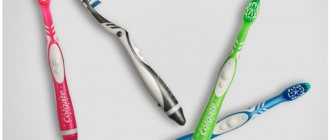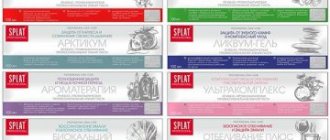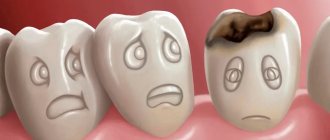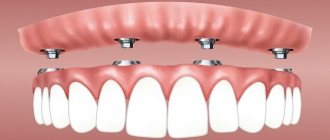What do we do every morning while getting ready for work, school, and other upcoming errands? Of course, starting each new day, we make sure to brush our teeth.
Such a daily ritual can be difficult to force a small child to perform, but an adult considers daily brushing of teeth to be something natural and obligatory, because oral care is very important and vital for every person.
People use a huge arsenal of devices and cleaning products to care for their oral cavity: brushes, the range of which is now quite large, pastes of different functions, tooth powders, gels, mouth rinses, oral sprays, brushes, dental floss. From this entire list, we will dwell in more detail on such a useful product as a toothpick.
Who invented toothpicks
A toothpick is a small, pointed device designed to painlessly remove food debris stuck between the teeth and gums.
Today, toothpicks can be found in every catering establishment, in office cafeterias, as well as in the kitchen at home. Based on archaeological excavations, scientists have concluded that people used these objects in the prehistoric period - about 1 million years ago. Then they were made from bird beaks, fish bones, etc.
In the 8th century, dental sticks began to be made from bird feathers, mainly chicken or goose raw materials. And only from the middle of the 19th century did wood become the main material for their production. The first toothpick-making machine was patented in 1872 by J.P. Cooley and Silas Noblet. At that time, the size of the product was 2x2x65 mm.
Photo: Aviora individually wrapped toothpicks
The best bamboo toothpicks for 2021
Bamboo is the most common material for making toothpicks. From a huge list of companies, the best, according to buyers, were:
- "Qualita";
- "Aviora";
- "Gelesta".
Article "QUA-6240" from
Purpose: maintaining cleanliness of the oral cavity.
A product with a blunt end to prevent gum injury. The sticks are sharpened at both ends and have antibacterial properties. Suitable for skewers to form a festive buffet table.
The contents are placed in an ergonomically shaped glass jar. The lid closes tightly to prevent dust from entering.
"QUA-6240" from , packaging design and contents
Main characteristics:
| Quantity: | 300 pcs. |
| Diameter: | 1.6 ml |
| Color: | beige |
| Material: | 100% bamboo |
| Tara: | glass |
| Manufacturer country: | China |
| How much are: | 60 rubles |
bamboo toothpicks Qualita
Advantages:
- natural composition;
- safe use;
- inexpensive;
- Possibility of household use.
Flaws:
- not identified.
Article "8609565" from
Purpose: for health.
Toothpicks pointed at both ends, one of which has a refreshing coating for the oral cavity (menthol). Each stick is individually packaged in paper and placed in a cardboard box.
This product is suitable for cigarette lovers. It is also convenient for public institutions to purchase - economically and profitably.
box of toothpicks "8609565" from
Main characteristics:
| Quantity: | 1000 pcs. |
| Taste: | menthol |
| Length: | 6.5 cm |
| Weight: | 200 g |
| Package size (centimeters): | 8/10 |
| Material: | made of bamboo |
| Production: | China |
| Price: | 87 rubles |
bamboo toothpicks Aviora
Advantages:
- quality;
- a large number of;
- profitable purchase;
- environmentally friendly product;
- will not peel off.
Flaws:
- not identified.
Article "13235" from
Purpose: for cleaning teeth.
Smooth, double-sharpened chopsticks are useful in the kitchen for snacks and for brushing teeth. The tips are slightly rounded, so they do not injure the enamel during use. Very thin, allow you to clean hard-to-reach places.
bamboo sticks “13235” from in a jar
Main characteristics:
| Number: | 200 pcs. |
| To whom: | adults |
| Taste: | absent |
| Color: | beige |
| Manufacturer country: | China |
| Price segment: | 57 rubles |
Gelesta toothpicks
Advantages:
- convenient container;
- from natural raw materials;
- solid;
- good quality.
Flaws:
- Sometimes you get a defective batch: a lot of broken ones.
Benefits and harms
The advantage of a toothpick is its convenience in public places where using a toothbrush is not possible. This device is especially important for people who have large gaps between their teeth, where food debris accumulates. Dental sticks also help remove plaque that has formed in the space between teeth.
The possible disadvantage of toothpicks is due to two factors: their direct use and the mistakes made during this process. Provided your teeth are healthy, you can remove food particles from your mouth by regular rinsing. Particles getting stuck in or between teeth indicate problems. Which can only be resolved by contacting a dentist. Using a toothpick in this case will only complicate the situation.
Health risks include:
- Damage to gums. The accumulation of food in periodontal pockets and interdental spaces indicates the presence of periodontitis - an inflammatory process that provokes tooth mobility with subsequent loss. A toothpick does not completely remove food debris, but only aggravates inflammation, which over time takes on an aggressive form. Lack of medical attention for the accumulation of food particles is a common cause of root caries. This pathology often leads to tooth extraction. In cases where treatment is possible, it is a rather complex and expensive process.
- Spread of infection. Even with the use of disposable toothpicks, it is impossible to prevent the development of stomatitis and gum inflammation. During the cleaning process, many pathogenic microorganisms settle on this device. Their combination with bleeding, often resulting from accidental damage to the gums, leads to the occurrence and development of stomatitis.
- Damage to the gums by a splinter. Even on polished products, as a result of pressure and exposure to saliva, the pointed tips split into fibers and often become a thorn in the gums. Subsequently, such a problem often develops into inflammation. The tips of plastic toothpicks dig into the gum tissue, causing a purulent inflammatory process. Moreover, a part of a plastic toothpick stuck at the edge of the gum leads to a wedge-shaped defect and caries.
In some cases, dental sticks do not reach stuck food particles, but, on the contrary, bury them deeper and deeper.
Production
The raw material for the production of toothpicks is birch wood, cut into pieces of approximately the same size. The sawn tree is kept in a vat of hot water for 18 hours, after which the bark is removed and then sanded.
The steamed, processed wood is fed to a peeling machine, where veneer is made from it. Then, on another machine, the veneer is cut into plates 35 centimeters long, 6 centimeters wide, and 2.2 millimeters thick. After cutting, the plates are dried: the material is loaded into an industrial dryer and remains there for several hours.
When drying is complete, the tree is left to rest for two days. The dried plates are cut into thin strips on a milling machine. If the wood has been dried well, the straw will be smooth and even. If not completely dried, this will significantly affect the quality of the product.
The resulting straw is sent to the next machine, where it is evenly cut into sticks of the required length. The cut toothpicks are immersed in a grinding machine, where they are pressed with a press and polished by friction against each other for two hours. After grinding, the material goes to a sorting sieve, where broken toothpicks are rejected.
Then comes the turn of the sharpening machine, on which each toothpick acquires sharp tips. Sharp toothpicks are sent along a conveyor to a machine that stacks them and packs them into plastic boxes.
Types of toothpicks and their features
Modern dental sticks are classified according to several indicators: materials of manufacture, sizes, additional functions, etc. Also, these products can be either disposable or reusable. Sharpened on one or both sides.
By material
Depending on the material of manufacture, dental sticks can be:
- wooden - made from birch, bamboo and other wood species, most often have two pointed ends;
- plastic (plastic) – characterized by the possibility of reusable use;
- silicone – have a flexible base that allows you to clean the space between the teeth without causing harm to the gum tissue;
- titanium - they are strong and durable, but at the same time require the most careful handling.
By color
Today, the range of toothpicks is characterized by a variety of shades. They can be: white, black, green, pink, multi-colored, and also imitating the color of natural wood.
By the presence of flavoring
Manufacturers offer both flavored toothpicks (mint, menthol, strawberry, etc.) and regular ones (unflavored).
Special impregnations of dental sticks not only provide fresh breath, but also perform a number of different functions, for example:
- normalization of intestinal function;
- antiseptic effect;
- saturation of gum tissue with vitamins.
The taste of the products can be as follows: coconut, lemon, green tea, kiwi, wild berries, chocolate, menthol, etc.
By age criterion
Toothpicks are produced not only for adults, but also for children. Children's products can be purchased both in pharmacies and in children's stores. The products are sold in packages along with instructions for use, transfer stickers, and a toy designer.
Additional items
Toothpicks with brushes and dental floss allow for more thorough cleaning between teeth, eliminating food particles and bacterial plaque.
Toothpicks with nicotine
Nicotine dental sticks are used as hygiene products, to alleviate the condition when quitting nicotine and in places where smoking is strictly prohibited.
Rating of the best plastic toothpicks for 2021
The best manufacturers of this range of steel:
- "Toothpick No. 1";
- "Dr. Steve";
- "Steelcon".
Model "8948134" from
Purpose: for sensitive teeth.
The peculiarity of the shape in comparison with wooden sticks: one end resembles the shape of a knife blade, the other - a toothbrush. The handle has grooves on both sides, which prevents it from sliding in the hand when cleaning the oral cavity. The sharpening configuration follows the shape of the tooth spaces and does not injure the gums.
These products can be used by people with braces, dentures and special dental structure. There is no need to make any special efforts when cleaning. The sticks are placed in a case that you can take with you everywhere.
Appearance of the toothpick and packaging “8948134” from
Main characteristics:
| Length: | 6.5 cm |
| Amount in a package: | 150 pcs. |
| To whom: | for children, adults |
| Material: | hypoallergenic plastic |
| Manufacturer country: | Taiwan |
| Average cost: | 93 rubles |
toothpicks Toothpick No.
Advantages:
- convenient case;
- effective cleansing;
- does not injure the gums;
- functional;
- value for money.
Flaws:
- not identified.
Products "Flostik" from
Purpose: removal of dental plaque, food particles.
Toothpicks with thread are made of light green plastic, packed in a plastic bag that closes tightly thanks to a special mechanism. The head bends, allowing you to comfortably clean your chewing teeth. Due to its enlargement, it penetrates below the gum line.
Note! It can be sold with a different set: 10, 30 or 50 devices. In addition, the company offers various flavors: coconut, chocolate, coffee, honey, lime and much more.
To avoid harm, before the procedure, carefully read the operating instructions.
“Flostik” from , view of the packaging from the outside
Main characteristics:
| Quantity: | 30 pcs. |
| Application: | disposable |
| Taste: | menthol |
| Compound: | polystyrene, polyamide thread, flavoring |
| Best before date: | 5 years |
| Manufacturer country: | Russia |
| By cost: | 125 rubles |
toothpicks Flostik Dr. Steve
Advantages:
- model with floss;
- multifunctional;
- convenient use;
- value for money.
Flaws:
- not identified.
Model "9879" from
Purpose: for dental care.
Plastic toothpicks with a thread at one end are designed for more thorough cleaning of the oral cavity. They give fresh breath and remove plaque. Thanks to their structure and shape, they easily reach hard-to-reach places, providing gentle care.
"9879" from in the package
Main characteristics:
| Taste: | citrus breeze |
| Quantity: | 10 pieces. |
| Type: | disposable |
| The edges: | spicy, with floss |
| Net weight: | 75 g |
| Color: | white |
| Material: | plastic |
| Average price: | 63 rubles |
bamboo toothpicks Stilcon
Advantages:
- instructions with photos on how to use;
- nice smell;
- inexpensive for trial;
- quality.
Flaws:
- not identified.
What to do if a toothpick gets stuck in your teeth
It is not recommended to try to remove a dental stick stuck in the interdental space yourself, since such manipulations will only worsen the situation. In this case, you must immediately make an appointment with a dentist, who will help you remove the toothpick from your tooth.
Application
In addition to their intended purpose, toothpicks are used in cooking to hold together rolls, canapés and similar dishes. Also used as a tool in latte art and making dough jewelry.
Toothpicks are also used to make a rhinestick, a noise-making musical instrument.
Modern companies even create their own style out of toothpicks, making them of unusual shapes. Toothpicks are also flavored with mint, cinnamon or clove oil, which gives them not only a pleasant smell, but also an antiseptic effect.
Which is better: toothpick or dental floss?
Toothpicks are convenient for getting rid of visible food debris, for example, meat fibers. This product can be used discreetly without leaving the table, turning away slightly or covering yourself with your hand. But their disadvantage is the high risk of damage to gum tissue and the inability to perform high-quality cleaning of gums from plaque.
Using dental floss is much safer; it is almost impossible to damage the enamel and gums. Proper use of this device allows you to effectively clean the interdental space. However, dental floss cannot be applied directly at the table. For manipulations related to cleaning, you need to go to the bathroom or another room.
Video: How toothpicks are made at the factory
Based on this, we can conclude: toothpicks are most suitable for situations where you need to quickly remove large particles of food. As for dental floss, its use is recommended daily in the evening to clean hard-to-reach areas of the dentition.
Varieties
There are two main types of toothpicks:
- Wooden. Made from bamboo or birch. May have one or two pointed ends.
- Plastic. Unlike wooden ones, they can be used several times. They are washed, dried and reused.
Wooden toothpicks with different flavor properties are popular. One of the most popular of these “delicious” toothpicks is cinnamon toothpicks. These are ordinary wooden toothpicks, the ends of which are soaked in cinnamon resin and then thoroughly dried.
The knife is not a competitor
Playwright William Shakespeare mentioned toothpicks more than once in his plays. One of the characters in his play “The End is the End” declares that toothpicks have already gone out of fashion. And in the comedy “Much Ado About Nothing,” the servant of the Prince of Aragon fervently offers to his master: “... would you like, I’ll bring you a toothpick from the most remote outskirts of Asia...”. The historical figure, the Danish Prince Amleth, whose biography served as a source for Shakespeare's play Hamlet, once accepted an invitation from the royal family of England. At the dinner, according to the description of the Danish chronicler Saxo Grammar, Amlet was dissatisfied with the manners of the king’s wife: “After dinner, using her toothpick, she swallowed the remnants of food extracted from the cracks between her teeth instead of spitting them out in a royal elegant manner.” It must be said that in those days, spitting out pieces of food was perceived as a compliment to the owner. Like, he fed me so satisfyingly that I can no longer swallow even pieces between my teeth. The toothpick was also mentioned twice by Miguel Cervantes in the immortal Don Quixote. One day, the cunning hidalgo complained that if thoughts of chivalry had not taken possession of him, he would have started creating some trinkets, for example, toothpicks. According to a note at this point, it was not becoming for Spanish nobles to engage in crafts, with the exception of a few. These included the production of toothpicks. In another part of the novel, the author admonishes: “Pitiful is that nobleman who eats from hand to mouth at home, but on the street pretends to be important and hypocritically picks his mouth with a toothpick, while he has not eaten anything that would require him to pick his teeth!” . In the 16th century, Portuguese nuns from the monastery of St. Bernard, who made toffee sweets, also offered toothpicks along with them. They were made by local peasants from orange trees. Subsequently, the candies disappeared into oblivion, and the orange toothpicks became a Portuguese brand. In the middle of the 20th century, more than 20 thousand people already worked in this industry, but there were not enough orange trees. Subsequently, the Portuguese switched to cheap types of wood - willow and aspen. By the way, the story of Cardinal Richelieu’s creation of a table knife out of fear of being killed is quite controversial. After all, there were always guards in the cardinal’s chambers. Another explanation is much more suitable. Allegedly, the cardinal was very annoyed when guests began to pick their teeth with a sharp knife, and in order to stop this, he ordered knives to be made with a rounded end. In the East, toothpicks were also in great use. In Japan, they were called tsumayoji, which consisted of three words: tsuma - “nail”, uo - “willow” and ji - “branch”. It turned out to be a willow twig instead of a nail. The Japanese believed that toothpicks should be made from different types of wood at different times of the year: willow in the spring, cherry in the summer, and chestnut in the fall and winter.
Gold, silver or bone?
The oldest toothpick that has come down to us dates back to 3500 BC. The golden stick was discovered in a royal tomb in Mesopotamia, in what is now Iraq. Similar gold, silver, bronze and bone toothpicks were used in Ancient Egypt, Greece and Rome. The author of Natural History, Pliny the Elder, his nephew Pliny the Younger, and the poet Martial discussed the advantages and disadvantages of toothpicks made from different materials. The set of essentials of the ancient Romans, in addition to tongs, included an item that was a toothpick on one side and a “spoon” for cleaning ears on the other. The set was attached with a ring to a belt or a pin to clothing. It is not surprising that the hero of the ancient Roman novel “Satyricon”, the rich man Trimalchio, picks his teeth with a similar silver toothpick at a feast. The founder of Islam, the Prophet Muhammad, also spoke about the benefits of toothpicks. Although this is not a mandatory subject for a Muslim, it is very useful. According to the canons, the prayer of a believer using a toothpick is 75 times more valuable than the prayer of an ordinary person. The prophet himself had a toothpick made of aromatic aloe wood, moistened with waters from the holy spring in Mecca. But the eastern poet Omar Khayyam used a golden toothpick. Also in the Middle East, chalcedony toothpicks were held in high esteem. In Europe, toothpicks found a second wind during the Renaissance. Aristocrats hung gold and silver toothpicks on a chain and wore them around their necks. This was done, for example, by the English kings James IV and Elizabeth I. The latter in 1570 received as a gift six gold toothpicks and several “tooth scarves” embroidered with silver thread. Since in those days they knew nothing about toothbrushes, they brushed their teeth with the same handkerchief wrapped around their finger. Fans of toothpicks, who wore several of them on a chain, were often ridiculed by their contemporaries. Thus, Archbishop Giovanni della Casa wrote in the 16th century that because of the jingling toothpicks on a chain, their bearers look like merchants, and if they hung a spoon, no one would notice the substitution. However, the benefits of toothpicks were already obvious then. It is no coincidence that the enlightener Erasmus of Rotterdam recommended “not to pick your teeth with your nails if there is food stuck there, as cats and dogs do, not to use napkins for this, but to chew the resin of some trees or resort to the feathers of chickens and hens.” In those days, a chicken feather was much more accessible than a gold or silver stick.











